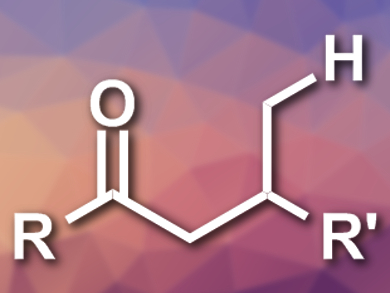The transition-metal-catalyzed β-C(sp3)–H functionalization of carbonyl compounds has been well developed. However, only few examples of γ-C(sp3)–H activation are known and these reactions are limited to substrates containing a β-quaternary carbon center. γ-C(sp3)–H activations do not happen easily because the reaction needs to go through a thermodynamically less favored six-membered metallacycle.
Jin-Quan Yu, The Scripps Research Institute, La Jolla, CA, USA, and colleagues have developed the first Pd(OAc)2-catalyzed γ-C(sp3)–H (hetero)arylation of ketones without a β-quaternary carbon center. The key to this reaction is using an auxiliary, 2,2-dimethyl aminooxyacetic acid, as a directing group and 5-nitro-2-pyridone as a ligand. The reactions of ketones with the directing group and (hetero)aryl iodides are carried out in hexafluoroisopropanol at 120 °C in the presence of CF3COOAg. The directing group can be removed by an Mn(II)-catalyzed reaction.
The researchers have isolated and characterized a rare PPh3-stabilized six-membered palladacycle intermediate during their study of the reaction mechanism. The utility of the synthesis method has been demonstrated by a sequential β- and γ-C(sp3)–H (hetero)arylation of muscone.
- Ligand-Enabled γ-C(sp3)–H Activation of Ketones,
Ru-Yi Zhu, Zi-Qi Li, Han Seul Park, Chris H. Senanayake, Jin-Quan Yu,
J. Am. Chem. Soc. 2018, 140, 3564–3568.
https://doi.org/10.1021/jacs.8b01359




